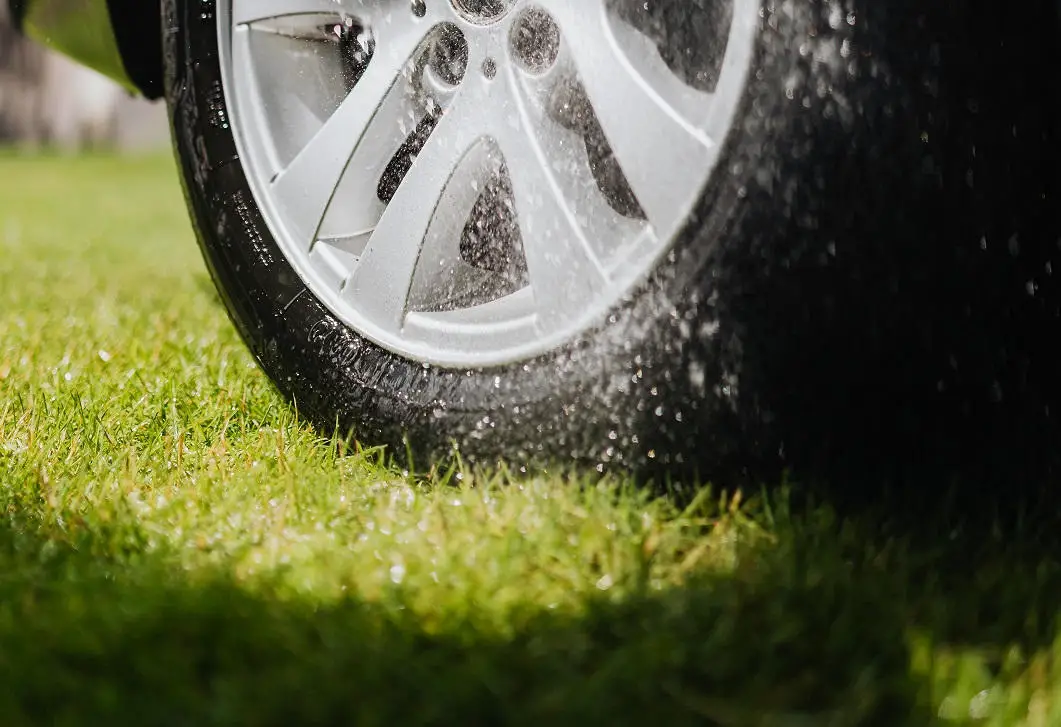

New research has found that urban stormwater particles from tire wear are the predominant type of microplastics. The research also highlighted the effectiveness of specific stormwater treatment devices and constructed wetlands in significantly reducing these contaminants. Credit: Karolina Grabowska
A recent study led by Griffith University revealed that urban stormwater particles from tire wear were the most prevalent microplastic
Published in Environmental Science & Technology, the research indicated that during rainfall, about 95% of the microplastics detected in stormwater runoff were from tire wear, ranging between 2 and 59 particles for every liter of water.
“Pollution of our waterways by microplastics is an emerging environmental concern due to their persistence and accumulation in aquatic organisms and ecosystems,” said lead author Dr Shima Ziajahromi, a research fellow at the Australian Rivers Institute.
“Stormwater runoff which contains a mixture of sediment, chemical, organic, and physical pollutants, is a critical pathway for microplastics to washed off from urban environments during rain and into local aquatic habitats.
“But to date, our knowledge of the amount of microplastics in urban stormwater, particularly tire wear particles, is limited, as is the potential strategies we can use to minimize this source.”
Tire rubber contains up to 2,500 chemicals with the contaminants that leach from tires considered more toxic to bacteria and microalgae than other plastic polymers.
“Due to the analytical challenges in measuring this source of microplastics in stormwater, research to date often lacks information about the actual number of tire wear particles in water samples,” said Dr. Ziajahromi.
Quantitative information of this type is crucial to improve our understanding of the amount of tire wear particles in stormwater, assess the risk to the environment, and develop management strategies.
“Our study quantified and characterized microplastics and tire wear particles in both stormwater runoff and sediment of stormwater drainage systems in Queensland,” said co-author Professor Fred Leusch, who leads the Australian Rivers Institute’s Toxicology Research Program.
“We also assessed the effectiveness of a stormwater treatment device to capture and remove these contaminants from stormwater and evaluated the role of a constructed stormwater wetland for capturing microplastics in the sediment, removing it from stormwater runoff.
“The device is a bag made of 0.2-millimeter mesh which can be retrofitted to stormwater drains. Although originally designed to capture gross pollutants, sediment, litter, and oil and grease, it significantly reduced microplastics from raw runoff, with up to 88% less microplastics in treated water which had passed through the device.”
Sediment samples collected from the inlet and outlet of a constructed stormwater wetland contained between 1,450 to 4,740 particles in every kilogram of sediment, with more microplastics in the sediment at the inlet than the outlet, indicating the wetland’s ability to remove them from stormwater.
“Microplastics that enter constructed wetlands for stormwater drainage systems settle in the sediment and form a biofilm, leading to their accumulation over time, removing them from stormwater runoff,” said Dr Ziajahromi.
“Urban stormwater runoff typically requires treatment for the removal of suspended solids and nutrients such as nitrogen and phosphorus in many jurisdictions in Australia, with some also requiring the removal of gross pollutants. However, regulations are lagging behind when it comes to microplastics and tire wear particles.”
“Our findings show that both constructed wetlands and the stormwater capture device are strategies that could be potentially used to prevent or at least decrease the amount of microplastics tire wear particles being transported from stormwater into our waterways.”
Reference: “Microplastics and Tire Wear Particles in Urban Stormwater: Abundance, Characteristics, and Potential Mitigation Strategies” by Shima Ziajahromi, Hsuan-Cheng Lu, Darren Drapper, Andy Hornbuckle and Frederic D. L. Leusch, 14 August 2023, Environmental Science & Technology.
DOI: 10.1021/acs.est.3c03949